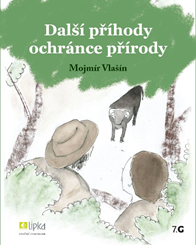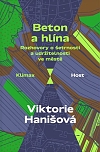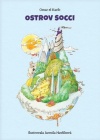Tiskové zprávy
WWF: Turistiku v Alpách čeká těžká volba
26. března 2006 | WWF
Every year the Alps receive approximately 12% of the world tourists (World Tourism Organization). In 2001 alone more than 80 million tourists visited the Alps.
It’s impossible to overstate the importance of ski-related tourism in the Alps. In Italy alone alpine areas are crisscrossed by a network of 4'693 km of ski-runs, 60% of which are serviced with artificial snow. Cross-country ski tracks amount to 2981 kilometres, 304 of which make use of snow cannons. The situation is similar across the Alps. WWF Italy has published an extensive report by the title of "Alpi, turismo e ambiente, alla ricerca di un equilibrio" (Alps, tourism and the environment, the quest for balance").
Ski tourism is a “mature” industry. Symptoms of obsolescence are become visible in the ski industry, in the Alps and in the rest of the world.
In the US, in the last 20 years, the total number of ski stations has decreased from approximately 800 to less than 500. The same seems to be happening in the European Alps as well.
Austria and Switzerland lie almost entirely within the Alps. Their share of European international tourism has markedly contracted, from 9% to 6% and from 5,5% to less than 4%, respectively (in the period 1999-2003).
France is struggling to maintain its position and its share of international winter tourism seems to have levelled off.
In Italy the situation is more complex. The decrease is being felt especially in low- or mid-altitude ski stations that are more directly hit by climate change. Alpine regions that can differentiate their tourism offer have suffered less than classical “ski paradises”.
The scarcity of the Alpine territory makes further development, at least in quantitative terms, very difficult. Alpine regions have tried in many ways to limit the construction of new ski infrastructure. Nonetheless pressure towards opening up more portions of the Alpine territory to tourism development is strong.
Apparently less people ski. This may be linked to a generation gap: as older skiers quit, they’re not replaced by younger generations. The relative expensiveness of the sport may also play a role.
On the other hand, competition from low-cost exotic destinations has heavily impacted winter tourism in the Alps. Alpine tourism is still relatively expensive, not least because of the high investment costs the operators have to face in order to counter the effects of climate change.
The 90’s were the hottest years in the 20th century. Scenarios can be hard to predict although a general consensus seems to have formed on the basic facts: terrestrial areas in the Northern hemisphere will be hardest hit and the consequences will be felt more heavily in winter. Exactly the “right” place and time to make winter tourism the predestined victim.
Global warming impact will be heavier in countries with comparatively more low-altitude skiing resorts. The snow line will rise 200-300 metres in the coming 30-50 years. Many ski resorts in central and eastern Austria will simply go out of business as a result of global warming.
In Italy half of current ski towns lie under 1’300 metres and are already confronted with snow-cover problems. The trend is increasingly evident: only stations higher than 1’500 metres will be able to host winter sports.
In Italy snow fall has diminished by an average of 18,7% in the 35 monitored ski resorts. This figure can be considered representative of most of the Southern Alps between 1'000 and 2'500 metres.
Low altitude areas have suffered more, with the average snow fall decrease reaching 40%. Internal Alpine areas have on the contrary suffered comparatively less.
As the report by WWF Italy shows, adaptation measures will need to be taken. Global warming will force a change of attitude and behaviour on the ski industry. The industry operators and all those who earn a living in the Alps through tourism have an interest in the protection of the natural heritage. After all that’s why tourists come to the Alps in the first place.
It’s impossible to overstate the importance of ski-related tourism in the Alps. In Italy alone alpine areas are crisscrossed by a network of 4'693 km of ski-runs, 60% of which are serviced with artificial snow. Cross-country ski tracks amount to 2981 kilometres, 304 of which make use of snow cannons. The situation is similar across the Alps. WWF Italy has published an extensive report by the title of "Alpi, turismo e ambiente, alla ricerca di un equilibrio" (Alps, tourism and the environment, the quest for balance").
Ski tourism is a “mature” industry. Symptoms of obsolescence are become visible in the ski industry, in the Alps and in the rest of the world.
In the US, in the last 20 years, the total number of ski stations has decreased from approximately 800 to less than 500. The same seems to be happening in the European Alps as well.
Austria and Switzerland lie almost entirely within the Alps. Their share of European international tourism has markedly contracted, from 9% to 6% and from 5,5% to less than 4%, respectively (in the period 1999-2003).
France is struggling to maintain its position and its share of international winter tourism seems to have levelled off.
In Italy the situation is more complex. The decrease is being felt especially in low- or mid-altitude ski stations that are more directly hit by climate change. Alpine regions that can differentiate their tourism offer have suffered less than classical “ski paradises”.
The scarcity of the Alpine territory makes further development, at least in quantitative terms, very difficult. Alpine regions have tried in many ways to limit the construction of new ski infrastructure. Nonetheless pressure towards opening up more portions of the Alpine territory to tourism development is strong.
Apparently less people ski. This may be linked to a generation gap: as older skiers quit, they’re not replaced by younger generations. The relative expensiveness of the sport may also play a role.
On the other hand, competition from low-cost exotic destinations has heavily impacted winter tourism in the Alps. Alpine tourism is still relatively expensive, not least because of the high investment costs the operators have to face in order to counter the effects of climate change.
The 90’s were the hottest years in the 20th century. Scenarios can be hard to predict although a general consensus seems to have formed on the basic facts: terrestrial areas in the Northern hemisphere will be hardest hit and the consequences will be felt more heavily in winter. Exactly the “right” place and time to make winter tourism the predestined victim.
Global warming impact will be heavier in countries with comparatively more low-altitude skiing resorts. The snow line will rise 200-300 metres in the coming 30-50 years. Many ski resorts in central and eastern Austria will simply go out of business as a result of global warming.
In Italy half of current ski towns lie under 1’300 metres and are already confronted with snow-cover problems. The trend is increasingly evident: only stations higher than 1’500 metres will be able to host winter sports.
In Italy snow fall has diminished by an average of 18,7% in the 35 monitored ski resorts. This figure can be considered representative of most of the Southern Alps between 1'000 and 2'500 metres.
Low altitude areas have suffered more, with the average snow fall decrease reaching 40%. Internal Alpine areas have on the contrary suffered comparatively less.
As the report by WWF Italy shows, adaptation measures will need to be taken. Global warming will force a change of attitude and behaviour on the ski industry. The industry operators and all those who earn a living in the Alps through tourism have an interest in the protection of the natural heritage. After all that’s why tourists come to the Alps in the first place.
Online diskuse
Redakce Ekolistu vítá čtenářské názory, komentáře a postřehy. Tím, že zde publikujete svůj příspěvek, se ale zároveň zavazujete dodržovat pravidla diskuse. V případě porušení si redakce vyhrazuje právo smazat diskusní příspěvěk




